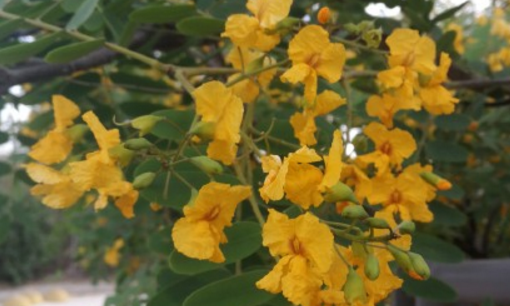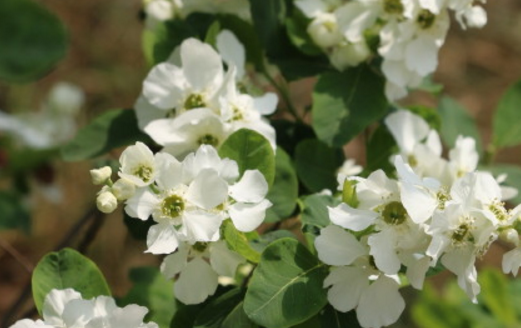When will the trees and chestnuts blossom and bear fruit and harvest? Where is it suitable for planting? What good varieties do you have? Can
Chinese chestnut tree is a tree up to 20 meters high, its fruit is known as "king of dried fruit", also known as chestnut, hairy chestnut, wind chestnut, Castanea mollissima, widely cultivated. When will the chestnut blossom and bear fruit and harvest? Where is it suitable for planting? What good varieties do you have? What kind of tree can be used for grafting? It is learned from the Hubei management termination base that Chinese chestnut seedlings are generally used to graft new varieties of Chinese chestnut, and the propagation of Chinese chestnut is mainly by sowing and grafting if there are good rootstocks of Fagaceae plants, such as Castanea mollissima, Quercus variabilis, etc., can be grafted. Because they all belong to Fagaceae, they have good affinity and high survival rate.

When will the chestnut blossom and bear fruit and harvest?
Blossom and bear fruit:
The main results are as follows: 1. The fruit of chestnut is enclosed in an involucre with dense spines, which is 5-11 cm in diameter and contains 1-7 nuts in an involucral bract. The flowering period is from May to June and the fruit ripening stage is from September to October.
2. Chestnut trees are generally planted for 4-8 years to bear fruit, 15-16 years into the full fruit period, the general fruiting life of chestnut trees can reach about 20-35 years.
Harvest:
The main results are as follows: 1. The suitable sowing time for chestnut in northern China is in the middle and late March. When the ground temperature is above 12 °.
2. Chinese chestnut matures from September to October. There are many varieties of Chinese chestnut, and the maturity periods of different varieties are different, but most of them mature in autumn. The flowering period of Chinese chestnut is usually from May to June and the fruiting period is from September to October. In some areas, Chinese chestnut has matured and listed in mid-late August, but generally all chestnuts will mature before November. Eating Chinese chestnut in autumn is also the most delicious and nutritious.
Where is the chestnut tree suitable for planting?
1. Chinese chestnut has a wide range of adaptation to climatic and soil conditions. The suitable annual average temperature is 10.5-21.7 ℃. If the temperature is too high and the hibernation is insufficient, it will lead to poor growth and development. If the temperature is too low, the chestnut will suffer frost damage. Chinese chestnut not only likes the soil moisture, but also afraid of the influence of rain and waterlogging. If there is too much rainfall, the soil will accumulate water for a long time, which can easily affect the root system, especially the mycorrhizal growth. Therefore, it is not suitable to develop chestnut garden in low-lying areas prone to waterlogging.
2. Chinese chestnut is sensitive to soil acidity and alkalinity, so it is suitable to grow in slightly acidic soil with PH value of 5 to 6, because chestnut is a high manganese plant, which can activate manganese, calcium and other nutrient elements under acidic conditions, which is beneficial to the absorption and utilization of chestnut. Xuzhou area is located on the south edge of Huangtan, with an annual average temperature of 13.7-14.1 ℃ and an annual precipitation of 782mm-946mm, which is suitable for the growth and development of chestnut trees.
What are the fine varieties of chestnut?
1. The main varieties of northern chestnut are Jinfeng (Xujia No. 1), Haifeng, Shifeng, Yanshan Red Chestnut (Yanhong), Hongguang Chestnut, Red Chestnut, Zaofeng, Houhanzhuang 20, Qingfeng, Yufeng, Shangfeng, Dongfeng, Tancheng 207, Flower Chestnut, Song Jiazao, Taian thin Shell, Huagai Chestnut, No-thorn Chestnut, Weizhi Chestnut No. 1, Weizhi Chestnut, Acorn Chestnut, semi-Flower, Huafeng, Huaxing, Yimeng short Branch, Yanqing and Yanquan, etc.
2. The main varieties of southern chestnut are nine species, Jiaoza, green soft thorn, short tie, the End of Heat red, Chen fruit oil chestnut, sticky floor, Dahongpao, Yelizang, big Chinese chestnut, Gudui chestnut, followed by Chinese chestnut, Shaoyang chestnut, double season chestnut, wool chestnut, early chestnut, September cold, medium thorn chestnut, shallow thorn chestnut, late chestnut, medium fruit red oil chestnut, big fruit black chestnut, precocious oil chestnut, small fruit oil chestnut, medium fruit red oil chestnut, medium fruit oil hair chestnut, Zhongguo Huangpi Chestnut and Cannon car No.2.
Time: 2019-03-16 Click:
- Prev

How to plant the seeds of Pseudoacacia pseudoacacia in the subfamily Euphorbiaceae? What are the effects and effects? The difference between Cassia chinensis and Cassia bicolor?
Robinia pseudoacacia cassia is also known as Robinia pseudoacacia, Jinfeng tree, Sophora pseudoacacia, golden medicine tree, powder leaf cassia, so how to plant the seeds of Cassia pseudoacacia? What are the effects and effects? The difference between Cassia chinensis and Cassia bicolor? According to the data, Cassia pseudoacacia is a plant that likes light, can tolerate semi-shade, and likes high temperature and humid climate.
- Next

The breeding methods and matters needing attention of rhododendron plum in Rosaceae? How do you plant seeds? What is the value and function?
The white cuckoo plum likes the warm and humid climate, likes the light but also withstands the concealment, the cold resistance is strong, so the breeding method and matters needing attention of the white cuckoo plum? How do you plant seeds? What is the value and function? According to the data, rhododendron plum does not have high requirements for soil, and acidic soil, neutral soil and barren soil can all grow.
Related
- Fuxing push coffee new agricultural production and marketing class: lack of small-scale processing plants
- Jujube rice field leisure farm deep ploughing Yilan for five years to create a space for organic food and play
- Nongyu Farm-A trial of organic papaya for brave women with advanced technology
- Four points for attention in the prevention and control of diseases and insect pests of edible fungi
- How to add nutrient solution to Edible Fungi
- Is there any good way to control edible fungus mites?
- Open Inoculation Technology of Edible Fungi
- Is there any clever way to use fertilizer for edible fungus in winter?
- What agents are used to kill the pathogens of edible fungi in the mushroom shed?
- Rapid drying of Edible Fungi

